My
List |
Addition Date
|
Target
|
Mission
|
Instrument
|
Size
|

|
2023-04-14 |
Europa
|
Galileo
|
Solid-State Imaging
|
360x360x1 |
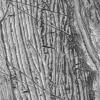
|
-
PIA25499:
-
Europa's Surface: Up-Close Topography
Full Resolution:
TIFF
(130 kB)
JPEG
(35.73 kB)
|

|
2024-10-02 |
Europa
|
Galileo
|
Solid-State Imaging
|
1024x425x3 |
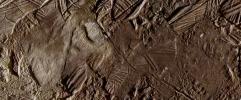
|
-
PIA26446:
-
Conamara Color Closeup
Full Resolution:
TIFF
(1.306 MB)
JPEG
(112.2 kB)
|

|
2024-10-11 |
Europa
|
Galileo
|
Near Infrared Mapping Spectrometer
|
1062x1062x3 |
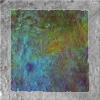
|
-
PIA26104:
-
Map of Water Signatures at Europa's Manannán Crater
Full Resolution:
TIFF
(3.385 MB)
JPEG
(289.1 kB)
|

|
1998-10-14 |
Jupiter
|
Galileo
Hubble Space Telescope
|
|
850x950x3 |

|
-
PIA01477:
-
Jupiter's White Ovals
Full Resolution:
TIFF
(648.3 kB)
JPEG
(32.09 kB)
|

|
2017-04-13 |
Europa
|
Galileo
Hubble Space Telescope
|
|
1235x618x3 |
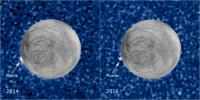
|
-
PIA21443:
-
Hubble Sees Recurring Plume Erupting From Europa
Full Resolution:
TIFF
(1.277 MB)
JPEG
(118.6 kB)
|

|
2002-10-08 |
Jupiter
|
Galileo
Hubble Space Telescope
IRTF
|
WFPC2
|
650x300x3 |
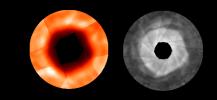
|
-
PIA03864:
-
Cold Hole Over Jupiter's Pole
Full Resolution:
TIFF
(176.2 kB)
JPEG
(15.88 kB)
|

|
2013-12-12 |
Europa
|
Galileo
Hubble Space Telescope
Voyager
|
|
1045x1045x3 |
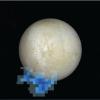
|
-
PIA17660:
-
Water Vapor Over Europa
Full Resolution:
TIFF
(3.278 MB)
JPEG
(64.1 kB)
|

|
2002-10-17 |
Callisto
|
Galileo
Voyager
|
VG Imaging Science Subsystem
Solid-State Imaging
|
8860x4490x3 |
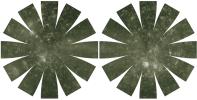
|
-
PIA03876:
-
Callisto Hemispherical Globes
Full Resolution:
TIFF
(49.38 MB)
JPEG
(3.662 MB)
|

|
2002-02-16 |
Europa
|
Galileo
Voyager
|
|
8812x4381x3 |
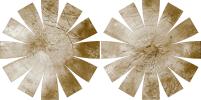
|
-
PIA03526:
-
Europa Hemispherical Globes
Full Resolution:
TIFF
(24.1 MB)
JPEG
(6.048 MB)
|

|
2002-05-10 |
Ganymede
|
Galileo
Voyager
|
VG Imaging Science Subsystem
VG Imaging Science Subsystem - Narrow Angle
|
8817x4382x3 |
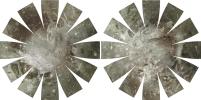
|
-
PIA03781:
-
Global Map of Ganymede
Full Resolution:
TIFF
(79.65 MB)
JPEG
(4.501 MB)
|

|
2005-05-31 |
Amalthea
|
Galileo
Voyager
|
Solid-State Imaging
|
1800x541x3 |

|
-
PIA07248:
-
Amalthea, A Rubble-Pile Moon
Full Resolution:
TIFF
(2.926 MB)
JPEG
(42.38 kB)
|

|
2007-04-02 |
Io
|
Galileo
Voyager
|
Solid-State Imaging
|
11445x3643x3 |

|
-
PIA09257:
-
Io in Motion

Full Resolution:
TIFF
(125.1 MB)
JPEG
(3.431 MB)
|

|
2014-02-12 |
Ganymede
|
Galileo
Voyager
|
|
1800x956x3 |
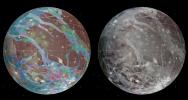
|
-
PIA17901:
-
Ganymede Global Geologic Map and Global Image Mosaic
Full Resolution:
TIFF
(5.165 MB)
JPEG
(213.7 kB)
|

|
2014-02-12 |
Ganymede
|
Galileo
Voyager
|
|
797x754x3 |
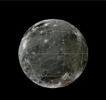
|
-
PIA17902:
-
Rotating Globe of Ganymede Geology

Full Resolution:
TIFF
(1.804 MB)
JPEG
(39.54 kB)
|

|
2014-02-26 |
Europa
|
Galileo
Voyager
|
|
2161x2161x1 |
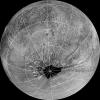
|
-
PIA18030:
-
Source Region for Possible Europa Plumes
Full Resolution:
TIFF
(4.676 MB)
JPEG
(987.7 kB)
|

|
2015-09-15 |
Jupiter
|
Galileo
Voyager
|
|
1700x956x3 |
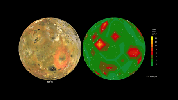
|
-
PIA19655:
-
Map of Io's Volcanic Heat Flow

Full Resolution:
TIFF
(1.71 MB)
JPEG
(100.1 kB)
|

|
2021-11-30 |
Europa
|
Galileo
Voyager
|
|
1100x600x3 |
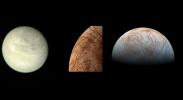
|
-
PIA24895:
-
Three Views of Europa
Full Resolution:
TIFF
(679.4 kB)
JPEG
(39.56 kB)
|

|
2014-08-04 |
Io
|
Gemini North Telescope
|
|
434x479x3 |

|
-
PIA18657:
-
Bright Outburst on Io
Full Resolution:
TIFF
(624.1 kB)
JPEG
(9.812 kB)
|

|
2014-08-04 |
Io
|
Gemini North Telescope
W. M. Keck Observatory
|
|
900x900x3 |
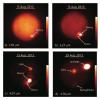
|
-
PIA18656:
-
Eruptions on Io
Full Resolution:
TIFF
(2.431 MB)
JPEG
(61.14 kB)
|

|
2013-04-23 |
Jupiter
|
Herschel Space Observatory
|
PACS
|
1765x1716x3 |
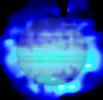
|
-
PIA17006:
-
Distribution of Water in Jupiter's Stratosphere
Full Resolution:
TIFF
(9.09 MB)
JPEG
(143.3 kB)
|

|
1998-05-02 |
Jupiter
|
Hubble Space Telescope
|
WFPC2
|
795x900x3 |

|
-
PIA01254:
-
Hubble Provides Complete View of Jupiter's Auroras
Full Resolution:
TIFF
(1.387 MB)
JPEG
(114 kB)
|

|
1998-05-02 |
Jupiter
|
Hubble Space Telescope
|
WFPC2
|
1152x860x3 |
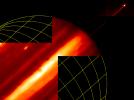
|
-
PIA01255:
-
Hubble Provides Infrared View of Jupiter's Moon, Ring, and Clouds
Full Resolution:
TIFF
(645.9 kB)
JPEG
(67.7 kB)
|

|
1998-05-02 |
Jupiter
|
Hubble Space Telescope
|
WFPC2
|
720x900x3 |

|
-
PIA01256:
-
Hubble Captures Volcanic Eruption Plume From Io
Full Resolution:
TIFF
(1.097 MB)
JPEG
(65.49 kB)
|

|
1998-05-02 |
Jupiter
|
Hubble Space Telescope
|
WFPC2
|
2069x2489x3 |

|
-
PIA01257:
-
Hubble Images Reveal Jupiter's Auroras
Full Resolution:
TIFF
(6.679 MB)
JPEG
(483.2 kB)
|

|
1998-05-02 |
Jupiter
|
Hubble Space Telescope
|
WFPC2
|
720x600x1 |
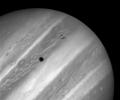
|
-
PIA01258:
-
Rare Hubble Portrait of Io and Jupiter
Full Resolution:
TIFF
(305.8 kB)
JPEG
(28.52 kB)
|

|
1998-05-02 |
Jupiter
|
Hubble Space Telescope
|
WFPC2
|
850x490x3 |
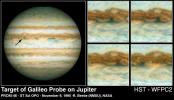
|
-
PIA01259:
-
Hubble Views the Galileo Probe Entry Site on Jupiter
Full Resolution:
TIFF
(993.4 kB)
JPEG
(64.05 kB)
|

|
1998-05-02 |
Jupiter
|
Hubble Space Telescope
|
WFPC2
|
800x600x3 |
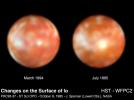
|
-
PIA01260:
-
Hubble Discovers Bright New Spot on Io
Full Resolution:
TIFF
(604.4 kB)
JPEG
(33.67 kB)
|

|
1998-05-02 |
Jupiter
|
Hubble Space Telescope
|
WFPC2
|
600x700x3 |

|
-
PIA01261:
-
Hubble Gallery of Jupiter's Galilean Satellites
Full Resolution:
TIFF
(527.3 kB)
JPEG
(44.81 kB)
|

|
1998-05-02 |
Jupiter
|
Hubble Space Telescope
|
WFPC2
|
800x800x3 |
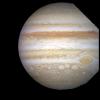
|
-
PIA01262:
-
Hubble Tracks Jupiter Storms
Full Resolution:
TIFF
(1.085 MB)
JPEG
(40.51 kB)
|

|
1998-05-02 |
Jupiter
|
Hubble Space Telescope
|
WFPC2
|
750x700x3 |
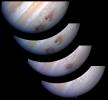
|
-
PIA01263:
-
Jupiter G Impact Evolution
Full Resolution:
TIFF
(752.8 kB)
JPEG
(31.92 kB)
|

|
1998-05-02 |
Jupiter
|
Hubble Space Telescope
|
WFPC2
|
830x568x3 |
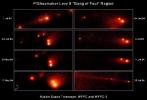
|
-
PIA01264:
-
Evolution of the P/Shoemaker-Levy 9 "Gang of Four" Region
Full Resolution:
TIFF
(543.5 kB)
JPEG
(69.45 kB)
|

|
1998-05-02 |
Jupiter
|
Hubble Space Telescope
|
WFPC2
|
800x600x1 |
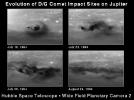
|
-
PIA01265:
-
Month-long Evolution of the D/G Jupiter Impact Sites from Comet P/Shoemaker-Levy 9
Full Resolution:
TIFF
(226.8 kB)
JPEG
(54.55 kB)
|

|
1998-05-02 |
Jupiter
|
Hubble Space Telescope
|
WFPC2
|
600x854x1 |

|
-
PIA01266:
-
Jupiter's Upper Atmospheric Winds Revealed in Ultraviolet Images by Hubble Telescope
Full Resolution:
TIFF
(239.6 kB)
JPEG
(62.37 kB)
|

|
1998-05-02 |
Jupiter
|
Hubble Space Telescope
|
WFPC2
|
800x600x3 |
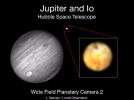
|
-
PIA01267:
-
Hubble Space Telescope Resolves Volcanoes on Io
Full Resolution:
TIFF
(357 kB)
JPEG
(40.59 kB)
|

|
1999-05-21 |
Io
|
Hubble Space Telescope
|
WFPC2
|
3000x1930x3 |
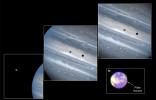
|
-
PIA01540:
-
Hubble Clicks Images of Io Sweeping Across Jupiter
Full Resolution:
TIFF
(6.217 MB)
JPEG
(285.7 kB)
|

|
1999-08-24 |
Jupiter
|
Hubble Space Telescope
|
WFPC2
|
2401x2870x3 |

|
-
PIA01593:
-
Hubble Views Ancient Storm in the Atmosphere of Jupiter - Montage
Full Resolution:
TIFF
(14.35 MB)
JPEG
(423.5 kB)
|

|
1999-08-24 |
Jupiter
|
Hubble Space Telescope
|
WFPC2
|
718x716x3 |
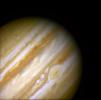
|
-
PIA01594:
-
Hubble Views Ancient Storm in the Atmosphere of Jupiter - Full Disk
Full Resolution:
TIFF
(1.127 MB)
JPEG
(30.32 kB)
|

|
1999-08-24 |
Jupiter
|
Hubble Space Telescope
|
WFPC2
|
321x321x3 |
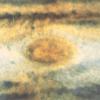
|
-
PIA01595:
-
Hubble Views Ancient Storm in the Atmosphere of Jupiter - May, 1992
Full Resolution:
TIFF
(306.5 kB)
JPEG
(13.83 kB)
|

|
1999-08-24 |
Jupiter
|
Hubble Space Telescope
|
WFPC2
|
321x321x3 |
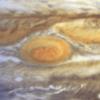
|
-
PIA01596:
-
Hubble Views Ancient Storm in the Atmosphere of Jupiter - July, 1994
Full Resolution:
TIFF
(301.3 kB)
JPEG
(12.4 kB)
|

|
1999-08-24 |
Jupiter
|
Hubble Space Telescope
|
WFPC2
|
321x321x3 |
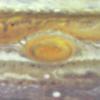
|
-
PIA01597:
-
Hubble Views Ancient Storm in the Atmosphere of Jupiter - August, 1994
Full Resolution:
TIFF
(285.2 kB)
JPEG
(10.9 kB)
|

|
1999-08-24 |
Jupiter
|
Hubble Space Telescope
|
WFPC2
|
321x321x3 |
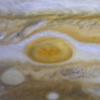
|
-
PIA01598:
-
Hubble Views Ancient Storm in the Atmosphere of Jupiter - February, 1995
Full Resolution:
TIFF
(218.9 kB)
JPEG
(9.833 kB)
|

|
1999-08-24 |
Jupiter
|
Hubble Space Telescope
|
WFPC2
|
321x321x3 |
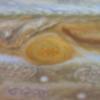
|
-
PIA01599:
-
Hubble Views Ancient Storm in the Atmosphere of Jupiter - October, 1995
Full Resolution:
TIFF
(245 kB)
JPEG
(9.032 kB)
|

|
1999-08-24 |
Jupiter
|
Hubble Space Telescope
|
WFPC2
|
321x321x3 |
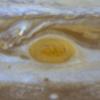
|
-
PIA02400:
-
Hubble Views Ancient Storm in the Atmosphere of Jupiter - October, 1996
Full Resolution:
TIFF
(219.7 kB)
JPEG
(9.823 kB)
|

|
1999-08-24 |
Jupiter
|
Hubble Space Telescope
|
WFPC2
|
321x321x3 |
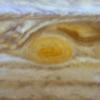
|
-
PIA02401:
-
Hubble Views Ancient Storm in the Atmosphere of Jupiter - April, 1997
Full Resolution:
TIFF
(217.3 kB)
JPEG
(10.36 kB)
|

|
1999-08-24 |
Jupiter
|
Hubble Space Telescope
|
WFPC2
|
321x321x3 |
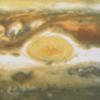
|
-
PIA02402:
-
Hubble Views Ancient Storm in the Atmosphere of Jupiter - June, 1999
Full Resolution:
TIFF
(258.3 kB)
JPEG
(11.79 kB)
|

|
2000-10-23 |
Jupiter
|
Hubble Space Telescope
|
WFPC2
|
693x485x1 |
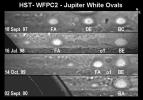
|
-
PIA02823:
-
Oval Storms Merging on Jupiter
Full Resolution:
TIFF
(223.6 kB)
JPEG
(43.14 kB)
|

|
2001-07-21 |
Jupiter
|
Hubble Space Telescope
|
WFPC2
|
752x417x3 |
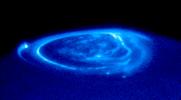
|
-
PIA03155:
-
Satellite Footprints Seen in Jupiter Aurora
Full Resolution:
TIFF
(202.4 kB)
JPEG
(34.06 kB)
|

|
2008-01-25 |
Jupiter
|
Hubble Space Telescope
|
Visible Light
|
2000x2682x3 |

|
-
PIA10224:
-
Jupiter Eruptions
Full Resolution:
TIFF
(16.11 MB)
JPEG
(290.4 kB)
|

|
2013-04-23 |
Jupiter
|
Hubble Space Telescope
|
Hubble Space Telescope
|
1536x2048x3 |

|
-
PIA17007:
-
Comet Shoemaker-Levy 9 Approaching Jupiter in 1994
Full Resolution:
TIFF
(9.441 MB)
JPEG
(79.26 kB)
|

|
2013-12-12 |
Europa
|
Hubble Space Telescope
|
|
2550x3300x3 |

|
-
PIA17659:
-
Artist's Concept of Europa Water Vapor Plume
Full Resolution:
TIFF
(25.25 MB)
JPEG
(814.6 kB)
|

|
2015-10-13 |
Jupiter
|
Hubble Space Telescope
|
WFPC3
|
3600x1596x3 |
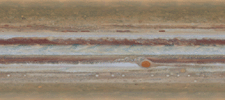
|
-
PIA19643:
-
Spinning Jupiter and Global Map

Full Resolution:
TIFF
(13.13 MB)
JPEG
(328.6 kB)
|

|
2015-10-13 |
Jupiter
|
Hubble Space Telescope
|
WFPC3
|
900x536x3 |
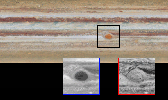
|
-
PIA19648:
-
New Changes in Jupiter's Great Red Spot

Full Resolution:
TIFF
(859.4 kB)
JPEG
(55.46 kB)
|

|
2015-10-13 |
Jupiter
|
Hubble Space Telescope
|
WFPC3
|
1798x446x3 |

|
-
PIA19659:
Jupiter Wave
Full Resolution:
TIFF
(2.407 MB)
JPEG
(52.69 kB)
|

|
2024-10-11 |
Europa
|
Hubble Space Telescope
|
Hubble Space Telescope
|
3840x2160x3 |
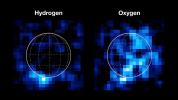
|
-
PIA26462:
-
Hubble's Ultraviolet Observations Reveal Hydrogen and Oxygen at Europa
Full Resolution:
TIFF
(8.013 MB)
JPEG
(325.8 kB)
|

|
2010-03-16 |
Jupiter
|
Hubble Space Telescope
Spitzer Space Telescope
Very Large Space Telescope (VLT)
|
Hubble Space Telescope
VLT
|
469x566x3 |

|
-
PIA12869:
-
Jupiter's Storms: Temperatures and Cloud Colors
Full Resolution:
TIFF
(797.5 kB)
JPEG
(38.71 kB)
|

|
2011-01-26 |
Jupiter
|
IRTF
|
Infrared Telescope
|
5000x2317x3 |
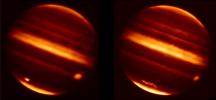
|
-
PIA13760:
-
Jupiter Scar in Infrared
Full Resolution:
TIFF
(34.76 MB)
JPEG
(392 kB)
|

|
2011-01-26 |
Jupiter
|
IRTF
|
Visible Light Camera
Gemini North Telescope
Hubble Space Telescope
VLT
|
1202x1200x3 |
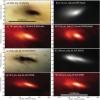
|
-
PIA13762:
-
Eight Looks at the Jupiter Impact
Full Resolution:
TIFF
(4.332 MB)
JPEG
(138.1 kB)
|

|
2012-10-17 |
Jupiter
|
IRTF
|
Infrared Telescope
|
720x541x3 |
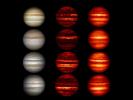
|
-
PIA16168:
-
Global Upheaval at Jupiter
Full Resolution:
TIFF
(1.169 MB)
JPEG
(27.58 kB)
|

|
2012-10-17 |
Jupiter
|
IRTF
|
Infrared Telescope
|
603x326x1 |
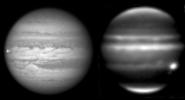
|
-
PIA16169:
-
Jupiter Shakes it Off
Full Resolution:
TIFF
(197 kB)
JPEG
(12.97 kB)
|

|
2015-07-07 |
Jupiter
|
IRTF
Juno
|
Infrared Telescope
|
365x350x3 |

|
-
PIA19640:
-
Jupiter's Infrared Glow

Full Resolution:
TIFF
(383.6 kB)
JPEG
(9.365 kB)
|

|
2011-08-03 |
Jupiter
|
Juno
|
|
1150x962x3 |
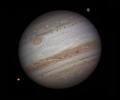
|
-
PIA14410:
-
Jupiter from the Ground
Full Resolution:
TIFF
(3.323 MB)
JPEG
(46.73 kB)
|

|
2011-08-03 |
Jupiter
|
Juno
|
|
700x700x3 |
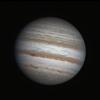
|
-
PIA14411:
-
Covering Jupiter from Earth and Space
Full Resolution:
TIFF
(1.472 MB)
JPEG
(22.27 kB)
|

|
2018-06-14 |
Jupiter
|
Juno
|
JunoCam
|
4424x1444x3 |

|
-
PIA22423:
-
Dark and Stormy Jupiter
Full Resolution:
TIFF
(15.22 MB)
JPEG
(877.8 kB)
|

|
2016-06-24 |
Jupiter
|
Juno
|
JunoCam
|
1075x570x3 |
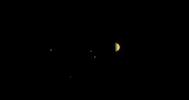
|
-
PIA20701:
-
Juno on Jupiter's Doorstep
Full Resolution:
TIFF
(68.44 kB)
JPEG
(11.12 kB)
|

|
2016-06-30 |
Jupiter
|
Juno
|
JunoCam
|
1168x660x3 |
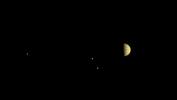
|
-
PIA20705:
-
Red Spot Spotted by Juno
Full Resolution:
TIFF
(86.2 kB)
JPEG
(13.69 kB)
|

|
2016-07-04 |
Jupiter
|
Juno
|
JunoCam
|
1092x573x3 |
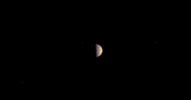
|
-
PIA20706:
-
Juno Closes in on Jupiter
Full Resolution:
TIFF
(68.71 kB)
JPEG
(11.19 kB)
|

|
2016-07-12 |
Jupiter
|
Juno
|
JunoCam
|
1045x555x3 |
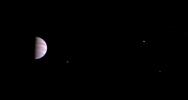
|
-
PIA20707:
-
Juno's Post-arrival View
Full Resolution:
TIFF
(105.1 kB)
JPEG
(12.47 kB)
|

|
2016-08-25 |
Jupiter
|
Juno
|
JunoCam
|
937x558x3 |
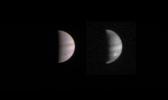
|
-
PIA20884:
-
Jupiter From 2.8 Million Miles
Full Resolution:
TIFF
(408.8 kB)
JPEG
(16.37 kB)
|

|
2016-08-27 |
Jupiter
|
Juno
|
JunoCam
|
831x1107x3 |

|
-
PIA20895:
-
Speeding Towards Jupiter's Pole
Full Resolution:
TIFF
(1.742 MB)
JPEG
(43.17 kB)
|

|
2016-09-02 |
Jupiter
|
Juno
|
JunoCam
|
1200x1200x3 |
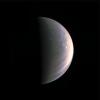
|
-
PIA21030:
-
Closing in on Jupiter's North Pole
Full Resolution:
TIFF
(1.514 MB)
JPEG
(44.15 kB)
|

|
2016-09-02 |
Jupiter
|
Juno
|
JunoCam
|
3642x2380x3 |
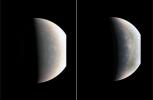
|
-
PIA21031:
-
Close-Up Views of Jupiter's North Pole
Full Resolution:
TIFF
(6.092 MB)
JPEG
(275.7 kB)
|

|
2016-09-02 |
Jupiter
|
Juno
|
JunoCam
|
1816x2380x3 |

|
-
PIA21032:
-
Jupiter Down Under
Full Resolution:
TIFF
(3.912 MB)
JPEG
(128.5 kB)
|

|
2016-09-02 |
Jupiter
|
Juno
|
JIRAM
|
822x733x3 |
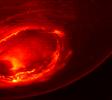
|
-
PIA21033:
-
Juno's View of Jupiter's Southern Lights
Full Resolution:
TIFF
(179.1 kB)
JPEG
(416.7 kB)
|

|
2016-09-02 |
Jupiter
|
Juno
|
JunoCam
|
1068x764x3 |
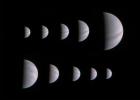
|
-
PIA21034:
-
Arrival and Departure at Jupiter
Full Resolution:
TIFF
(845 kB)
JPEG
(27.06 kB)
|

|
2016-09-02 |
Jupiter
|
Juno
|
JunoCam
|
1262x1760x1 |

|
-
PIA21035:
-
Southern Hemisphere Close-Up
Full Resolution:
TIFF
(972.7 kB)
JPEG
(120.8 kB)
|

|
2016-09-02 |
Jupiter
|
Juno
|
JIRAM
|
1155x613x3 |
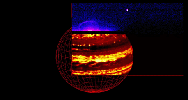
|
-
PIA21036:
-
Juno Captures Jupiter's Glow in Infrared Light

Full Resolution:
TIFF
(675.2 kB)
JPEG
(50.07 kB)
|

|
2016-09-02 |
Jupiter
|
Juno
|
Waves
|
1157x609x3 |
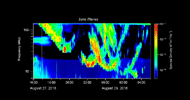
|
-
PIA21037:
-
Juno Listens to Jupiter's Auroras Sing

Full Resolution:
TIFF
(555.7 kB)
JPEG
(69.43 kB)
|

|
2016-10-19 |
Jupiter
|
Juno
|
Microwave Radiometer (MWR)
|
648x610x3 |
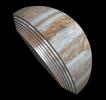
|
-
PIA21107:
-
Juno's First Slice of Jupiter
Full Resolution:
TIFF
(547.7 kB)
JPEG
(35.15 kB)
|

|
2016-10-19 |
Jupiter
|
Juno
|
JunoCam
|
1228x506x3 |
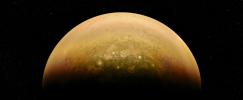
|
-
PIA21108:
-
Jupiterrise
Full Resolution:
TIFF
(916.9 kB)
JPEG
(47.5 kB)
|

|
2016-12-14 |
Jupiter
|
Juno
|
JunoCam
|
1060x1600x3 |

|
-
PIA21219:
-
Juno Captures Jupiter 'Pearl'
Full Resolution:
TIFF
(3.096 MB)
JPEG
(106.1 kB)
|

|
2017-01-13 |
Jupiter
|
Juno
|
JunoCam
|
825x1206x3 |

|
-
PIA21376:
-
Crescent Jupiter with the Great Red Spot
Full Resolution:
TIFF
(621.5 kB)
JPEG
(30.35 kB)
|

|
2017-01-19 |
Jupiter
|
Juno
|
JunoCam
|
782x622x3 |
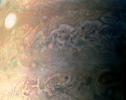
|
-
PIA21377:
-
Jupiter Pearl and Swirling Cloud Tops
Full Resolution:
TIFF
(1.46 MB)
JPEG
(65.3 kB)
|

|
2017-01-25 |
Jupiter
|
Juno
|
JunoCam
|
1338x2597x3 |

|
-
PIA21378:
-
Juno's Close Look at a Little Red Spot
Full Resolution:
TIFF
(8.533 MB)
JPEG
(219.5 kB)
|

|
2017-02-01 |
Jupiter
|
Juno
|
JunoCam
|
600x600x3 |
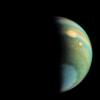
|
-
PIA21379:
-
Jupiter Polar Haze in False Color
Full Resolution:
TIFF
(299.3 kB)
JPEG
(17.24 kB)
|

|
2017-02-04 |
Jupiter
|
Juno
|
JunoCam
|
1600x1600x3 |
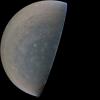
|
-
PIA21380:
-
Jovian 'Antarctica'
Full Resolution:
TIFF
(3.163 MB)
JPEG
(101.9 kB)
|

|
2017-02-08 |
Jupiter
|
Juno
|
JunoCam
|
1425x1869x3 |

|
-
PIA21381:
-
Jupiter From Below (Enhanced Color)
Full Resolution:
TIFF
(2.614 MB)
JPEG
(159.9 kB)
|

|
2017-02-17 |
Jupiter
|
Juno
|
JunoCam
|
1510x806x3 |
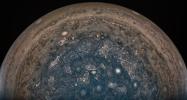
|
-
PIA21382:
-
Jovian Stormy Weather
Full Resolution:
TIFF
(3.197 MB)
JPEG
(154.8 kB)
|

|
2017-02-24 |
Jupiter
|
Juno
|
JunoCam
|
1568x1097x3 |
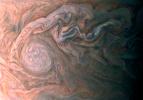
|
-
PIA21383:
-
Jovian Art
Full Resolution:
TIFF
(5.162 MB)
JPEG
(259.1 kB)
|

|
2017-03-01 |
Jupiter
|
Juno
|
JunoCam
|
796x846x3 |

|
-
PIA21384:
-
Juno Captures Jupiter Cloudscape in High Resolution
Full Resolution:
TIFF
(1.426 MB)
JPEG
(29.16 kB)
|

|
2017-03-08 |
Jupiter
|
Juno
|
JunoCam
|
1920x1080x3 |
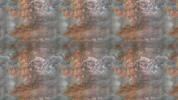
|
-
PIA21385:
-
Jupiter Wallpaper
Full Resolution:
TIFF
(3.815 MB)
JPEG
(241.5 kB)
|

|
2017-03-24 |
Jupiter
|
Juno
|
JunoCam
|
1790x1627x3 |
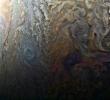
|
-
PIA21386:
-
Dark Spot and Jovian 'Galaxy'
Full Resolution:
TIFF
(8.243 MB)
JPEG
(425.9 kB)
|

|
2017-03-30 |
Jupiter
|
Juno
|
JunoCam
|
1200x936x3 |
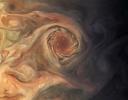
|
-
PIA21387:
-
Jupiter's Swirling 'Pearl' Storm
Full Resolution:
TIFF
(3.371 MB)
JPEG
(95.81 kB)
|

|
2017-04-06 |
Jupiter
|
Juno
|
JunoCam
|
2178x1760x3 |
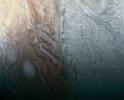
|
-
PIA21388:
-
When Jovian Light and Dark Collide
Full Resolution:
TIFF
(11.01 MB)
JPEG
(450.4 kB)
|

|
2017-04-19 |
Jupiter
|
Juno
|
JunoCam
|
1620x1200x3 |
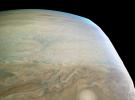
|
-
PIA21389:
-
The Edge of Jupiter
Full Resolution:
TIFF
(5.216 MB)
JPEG
(224.8 kB)
|

|
2017-05-05 |
Jupiter
|
Juno
|
JunoCam
|
1225x1837x3 |

|
-
PIA21390:
-
Approaching Jupiter
Full Resolution:
TIFF
(4.159 MB)
JPEG
(187.5 kB)
|

|
2017-05-18 |
Jupiter
|
Juno
|
JunoCam
|
1620x1200x3 |
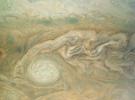
|
-
PIA21391:
-
Jovian Cloud Tops
Full Resolution:
TIFF
(5.834 MB)
JPEG
(249.4 kB)
|

|
2017-05-25 |
Jupiter
|
Juno
|
JunoCam
|
2646x3395x3 |

|
-
PIA21641:
-
Southern Storms
Full Resolution:
TIFF
(19.92 MB)
JPEG
(657.8 kB)
|

|
2017-05-25 |
Jupiter
|
Juno
|
Microwave Radiometer
|
6144x3375x3 |
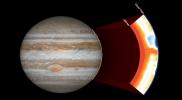
|
-
PIA21642:
-
Under Jupiter's Cloud Tops
Full Resolution:
TIFF
(18.18 MB)
JPEG
(635.8 kB)
|

|
2017-05-25 |
Jupiter
|
Juno
|
Stellar Reference Unit (SRU-1)
|
512x512x1 |
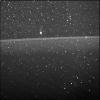
|
-
PIA21644:
-
Jupiter Ring, With Orion
Full Resolution:
TIFF
(262.6 kB)
JPEG
(51.47 kB)
|

|
2017-05-25 |
Jupiter
|
Juno
|
Ultraviolet Spectrograph
|
801x801x3 |
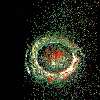
|
-
PIA21643:
-
Jupiter's Southern Lights

Full Resolution:
TIFF
(1.307 MB)
JPEG
(202.2 kB)
|

 Planetary Data System
Planetary Data System





















































































































